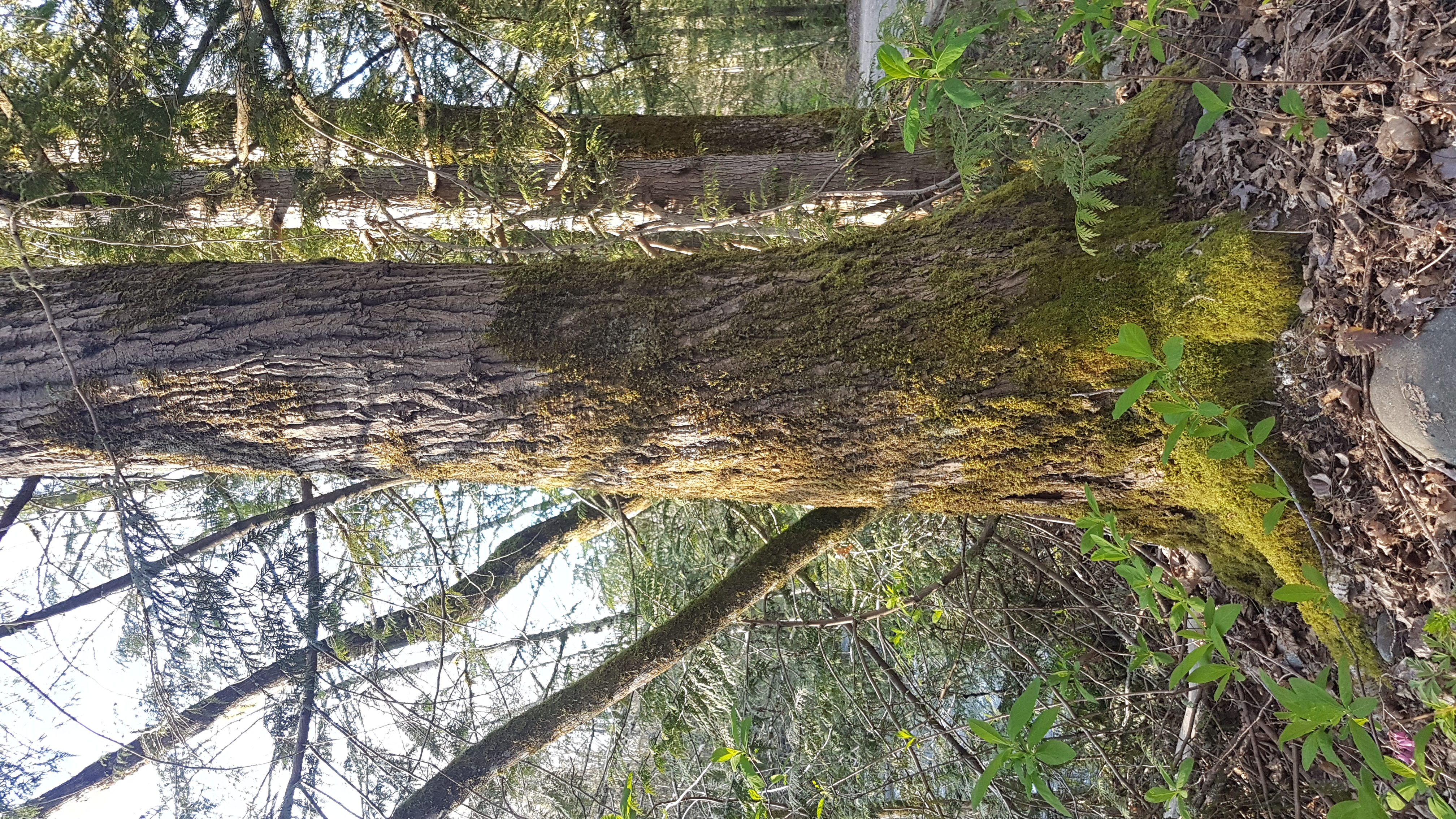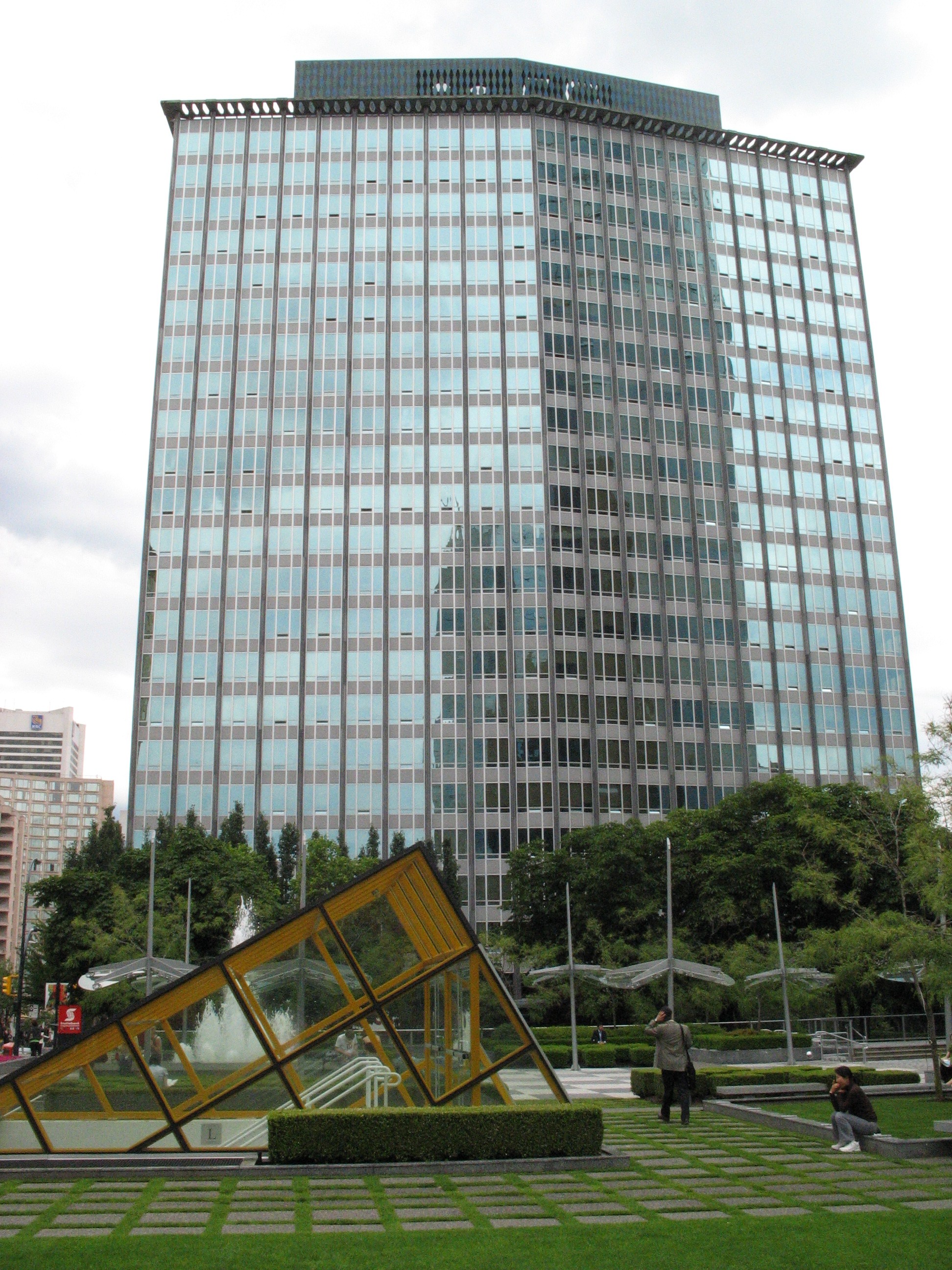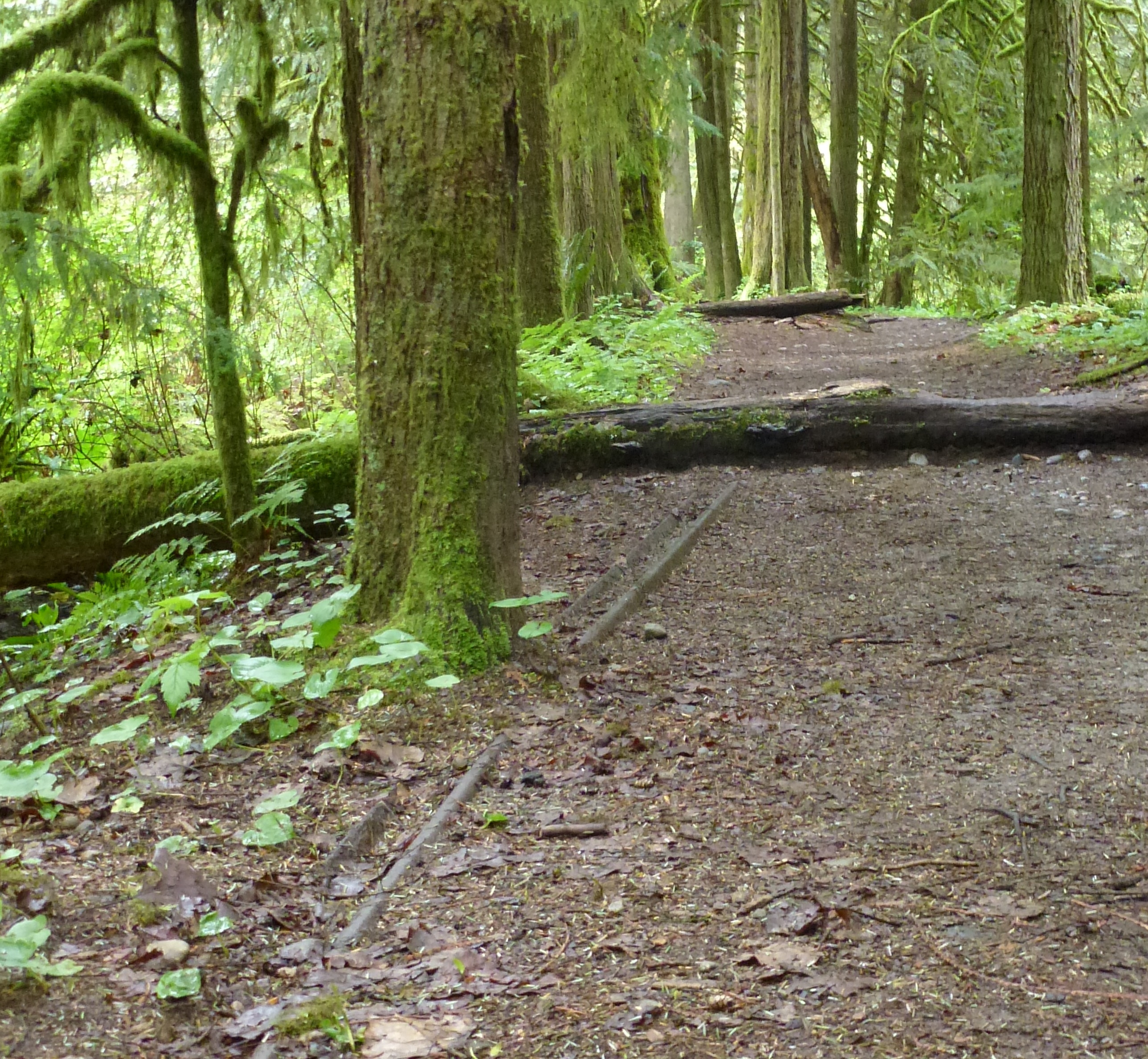|
Coquitlam Dam
Coquitlam Dam is a hydraulic fill embankment dam on the Coquitlam River in the city of Coquitlam, British Columbia. Although it has no powerhouse of its own, its waters divert to Buntzen Lake, making it part of BC Hydro's electrical generation infrastructure. It is also one of the main reservoirs for the Greater Vancouver Water District. BC Hydro has released a new document in March 2018 that addresses emergency preparedness and outlines the areas effected should the dam fail as a result of an extreme earthquake event. History The first Coquitlam Dam, built to raise the water level of Coquitlam Lake by five feet, was begun in April 1904, and completed in 1905. It was built to protect the water supply to powerhouses on Indian Arm, via a tunnel to Buntzen Lake, and also supplied water to New Westminster New Westminster (colloquially known as New West) is a city in the Lower Mainland region of British Columbia, Canada, and a member municipality of the Metro Vancouver Reg ... [...More Info...] [...Related Items...] OR: [Wikipedia] [Google] [Baidu] |
Coquitlam River
The Coquitlam River ( /koʊˈkwɪtləm/ or /kəˈkwɪtləm/) is a tributary of the Fraser River in the Canadian province of British Columbia. The river's name comes from the word Kʷikʷəƛ̓əm which translates to "Red fish up the river". The name is a reference to a sockeye salmon species that once occupied the river's waters. The river is an 18 km meandering river with 30 tributaries and various morphological features. Owing to the size and area of its location, the river has a history of disastrous floods.G3 Consulting Ltd. (G3). 2016. COQMON#8 Lower Coquitlam River Substrate Quality Assessment (2012-2015). Prepared for BC Hydro and Power Authority by G3 Consulting Ltd., Surrey, BC. 26p + Appendices. The Kwikwetlem first nations were the first humans to live in the area, followed by settlers thousands of years later. After settlers arrived the river would soon be altered many times for the resources it holds. The most recent changes are the generation of hydro-electricit ... [...More Info...] [...Related Items...] OR: [Wikipedia] [Google] [Baidu] |
Coquitlam Lake
Coquitlam Lake is a reservoir located just north of Coquitlam, British Columbia. It is one of the three main water sources for Metro Vancouver, and part of the Coquitlam watershed. It is also a part of BC Hydro's power generation system. A tunnel directs water from the lake to nearby Buntzen Lake, and from there to a pair of power stations. History Construction of the tunnel between Coquitlam Lake and Buntzen Lake began in 1902 and finished in 1905, supplying water to powerhouses on Indian Arm, which supplied electricity to Vancouver.Will KoopCoquitlam Watershed History Retrieved on 22 February 2009 The first Coquitlam Dam, built to raise the water level by , was begun in April 1904 and completed in 1905. It was built to protect the water supply to the powerhouses, and also supplied water to New Westminster. By 1906 the original dam was discovered to be leaking, and while repairs were made the leak continued through 1908, until the current dam was completed in 1914. There is a ... [...More Info...] [...Related Items...] OR: [Wikipedia] [Google] [Baidu] |
Coquitlam
Coquitlam ( ) is a city in the Lower Mainland of British Columbia, Canada. Mainly suburban, Coquitlam is the List of cities in British Columbia, sixth-largest city in the province, with a population of 148,625 in 2021, and one of the 21 municipalities comprising Metro Vancouver. The mayor is Richard Stewart. Simon Fraser (explorer), Simon Fraser explored the region in 1808, encountering the Indigenous Coast Salish peoples. Europeans started settling in the 1860s. Fraser Mills, a lumber mill on the north bank of the Fraser River was constructed in 1889, and by 1908 there were 20 houses, a store, post office, hospital, office block, barber shop, pool hall, and a Gurdwara, Sikh temple. History The Coast Salish people were the first to live in this area, and archaeology confirms continuous occupation of the territory for at least 9,000 years. The name ''Kwikwetlem First Nation, Kwikwetlem'' is said to be derived from a Coast Salish term "kʷikʷəƛ̓əm" meaning "red fish up th ... [...More Info...] [...Related Items...] OR: [Wikipedia] [Google] [Baidu] |
British Columbia
British Columbia (commonly abbreviated as BC) is the westernmost province of Canada, situated between the Pacific Ocean and the Rocky Mountains. It has a diverse geography, with rugged landscapes that include rocky coastlines, sandy beaches, forests, lakes, mountains, inland deserts and grassy plains, and borders the province of Alberta to the east and the Yukon and Northwest Territories to the north. With an estimated population of 5.3million as of 2022, it is Canada's third-most populous province. The capital of British Columbia is Victoria and its largest city is Vancouver. Vancouver is the third-largest metropolitan area in Canada; the 2021 census recorded 2.6million people in Metro Vancouver. The first known human inhabitants of the area settled in British Columbia at least 10,000 years ago. Such groups include the Coast Salish, Tsilhqotʼin, and Haida peoples, among many others. One of the earliest British settlements in the area was Fort Victoria, established ... [...More Info...] [...Related Items...] OR: [Wikipedia] [Google] [Baidu] |
BC Hydro
The British Columbia Hydro and Power Authority, operating as BC Hydro, is a Canadian electric utility in the province of British Columbia. It is the main electricity distributor, serving more than 4 million customers in most areas, with the exception of the City of New Westminster, where the city runs its own electrical department and portions of the West Kootenay, Okanagan, the Boundary Country and Similkameen regions, where FortisBC, a subsidiary of Fortis Inc. directly provides electric service to 213,000 customers and supplies municipally owned utilities in the same area. As a provincial Crown corporation, BC Hydro reports to the BC Ministry of Energy, Mines and Low Carbon Innovation, and is regulated by the British Columbia Utilities Commission (BCUC). Its mandate is to generate, purchase, distribute and sell electricity. BC Hydro operates 32 hydroelectric facilities and three natural gas-fueled thermal power plants. As of 2014, 95 per cent of the province's electricity was ... [...More Info...] [...Related Items...] OR: [Wikipedia] [Google] [Baidu] |
Embankment Dam
An embankment dam is a large artificial dam. It is typically created by the placement and compaction of a complex semi-plastic mound of various compositions of soil or rock. It has a semi-pervious waterproof natural covering for its surface and a dense, impervious core. This makes the dam impervious to surface or seepage erosion. Such a dam is composed of fragmented independent material particles. The friction and interaction of particles binds the particles together into a stable mass rather than by the use of a cementing substance. Types Embankment dams come in two types: the earth-filled dam (also called an earthen dam or terrain dam) made of compacted earth, and the rock-filled dam. A cross-section of an embankment dam shows a shape like a bank, or hill. Most have a central section or core composed of an impermeable material to stop water from seeping through the dam. The core can be of clay, concrete, or asphalt concrete. This type of dam is a good choice for sites wit ... [...More Info...] [...Related Items...] OR: [Wikipedia] [Google] [Baidu] |
Indian Arm
Indian Arm ( hur, səl̓ilw̓ət) is a steep-sided glacial fjord adjacent to the city of Vancouver in southwestern British Columbia. Formed during the last Ice Age, it extends due north from Burrard Inlet, between the communities of Belcarra (to the east) and the District of North Vancouver (to the west), then on into mountainous wilderness. Burrard Inlet and the opening of Indian Arm was mapped by Captain George Vancouver and fully explored days later by Dionisio Alcalá Galiano in June 1792. Geography Indian Arm is a salt-water fjord that extends about north from Burrard Inlet. There are no crossings, and road access is limited to the communities on the southern portion of the arm. The steep mountain slopes are so impassable that most have seen no development, despite the proximity to a major city. Indian River, marked by a small dock at the north end of the arm, can be reached by boat from the Vancouver area or by a logging road from Squamish. Scenery and attractions ... [...More Info...] [...Related Items...] OR: [Wikipedia] [Google] [Baidu] |
New Westminster
New Westminster (colloquially known as New West) is a city in the Lower Mainland region of British Columbia, Canada, and a member municipality of the Metro Vancouver Regional District. It was founded by Major-General Richard Moody as the capital of the Colony of British Columbia in 1858 and continued in that role until the Mainland and Island colonies were merged in 1866. It was the British Columbia Mainland's largest city from that year until it was passed in population by Vancouver during the first decade of the 20th century. It is located on the banks of the Fraser River as it turns southwest towards its estuary, on the southwest side of the Burrard Peninsula and roughly at the centre of the Greater Vancouver region. History The area now known as New Westminster was originally inhabited by Kwantlen First Nation. The discovery of gold in BC and the arrival of gold seekers from the south prompted fear amongst the settlers that Americans may invade to take over this land. R ... [...More Info...] [...Related Items...] OR: [Wikipedia] [Google] [Baidu] |
Port Moody-Coquitlam Railway
The Port Moody-Coquitlam Railway also known as the Thurston-Flavelle Railway was a short railway line operated by the British Columbia Electric Railway. The line ran from the east end of Burrard Inlet to Coquitlam Lake, British Columbia, Canada. History The railway connected the Port Moody-Ioco spur of the Canadian Pacific Railway to the Coquitlam Dam and was built during the early 1910s in-order to haul supplies and materials to the dam. It was built by B.C. Electric in partnership with Robert McNair of the Robert McNair Shingle Company, who signed a twenty-five year deal with B.C. Electric on 1 October 1912. The railway was first estimated to cost $75,000 (although this would balloon to $206,000). The railway was use 40 pound (18.14 kg) rails built on a 66 foot (20.1 metre) right-of-way. McNair would be allowed to use the line, but would have to pay $50,000 towards construction costs and thereafter the same amount every year. The line saw its first seven miles complete on 7 ... [...More Info...] [...Related Items...] OR: [Wikipedia] [Google] [Baidu] |
Geography Of Coquitlam
Geography (from Greek: , ''geographia''. Combination of Greek words ‘Geo’ (The Earth) and ‘Graphien’ (to describe), literally "earth description") is a field of science devoted to the study of the lands, features, inhabitants, and phenomena of Earth. The first recorded use of the word γεωγραφία was as a title of a book by Greek scholar Eratosthenes (276–194 BC). Geography is an all-encompassing discipline that seeks an understanding of Earth and its human and natural complexities—not merely where objects are, but also how they have changed and come to be. While geography is specific to Earth, many concepts can be applied more broadly to other celestial bodies in the field of planetary science. One such concept, the first law of geography, proposed by Waldo Tobler, is "everything is related to everything else, but near things are more related than distant things." Geography has been called "the world discipline" and "the bridge between the human and ... [...More Info...] [...Related Items...] OR: [Wikipedia] [Google] [Baidu] |
Buildings And Structures In Coquitlam
A building, or edifice, is an enclosed structure with a roof and walls standing more or less permanently in one place, such as a house or factory (although there's also portable buildings). Buildings come in a variety of sizes, shapes, and functions, and have been adapted throughout history for a wide number of factors, from building materials available, to weather conditions, land prices, ground conditions, specific uses, prestige, and aesthetic reasons. To better understand the term ''building'' compare the list of nonbuilding structures. Buildings serve several societal needs – primarily as shelter from weather, security, living space, privacy, to store belongings, and to comfortably live and work. A building as a shelter represents a physical division of the human habitat (a place of comfort and safety) and the ''outside'' (a place that at times may be harsh and harmful). Ever since the first cave paintings, buildings have also become objects or canvasses of much artistic ... [...More Info...] [...Related Items...] OR: [Wikipedia] [Google] [Baidu] |







